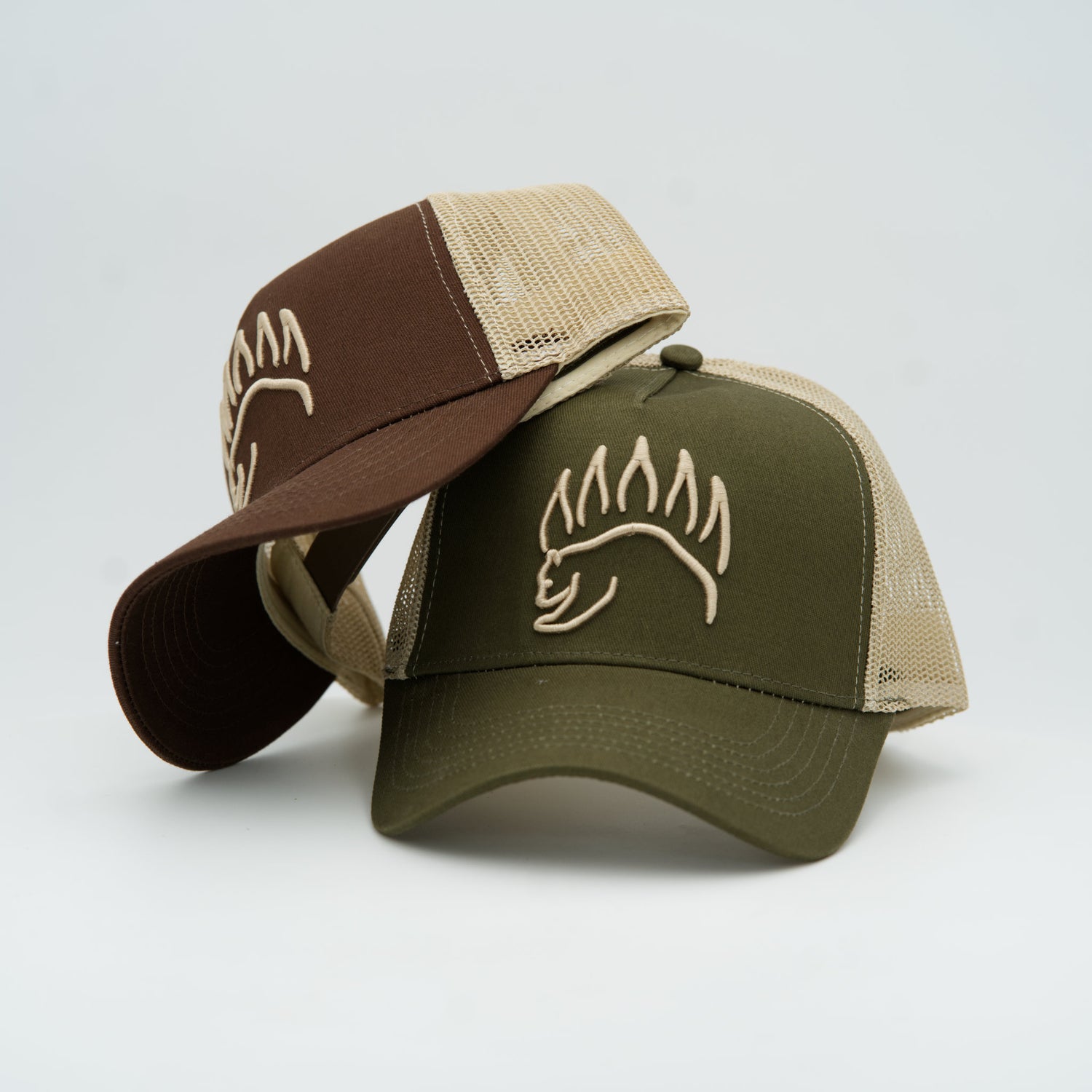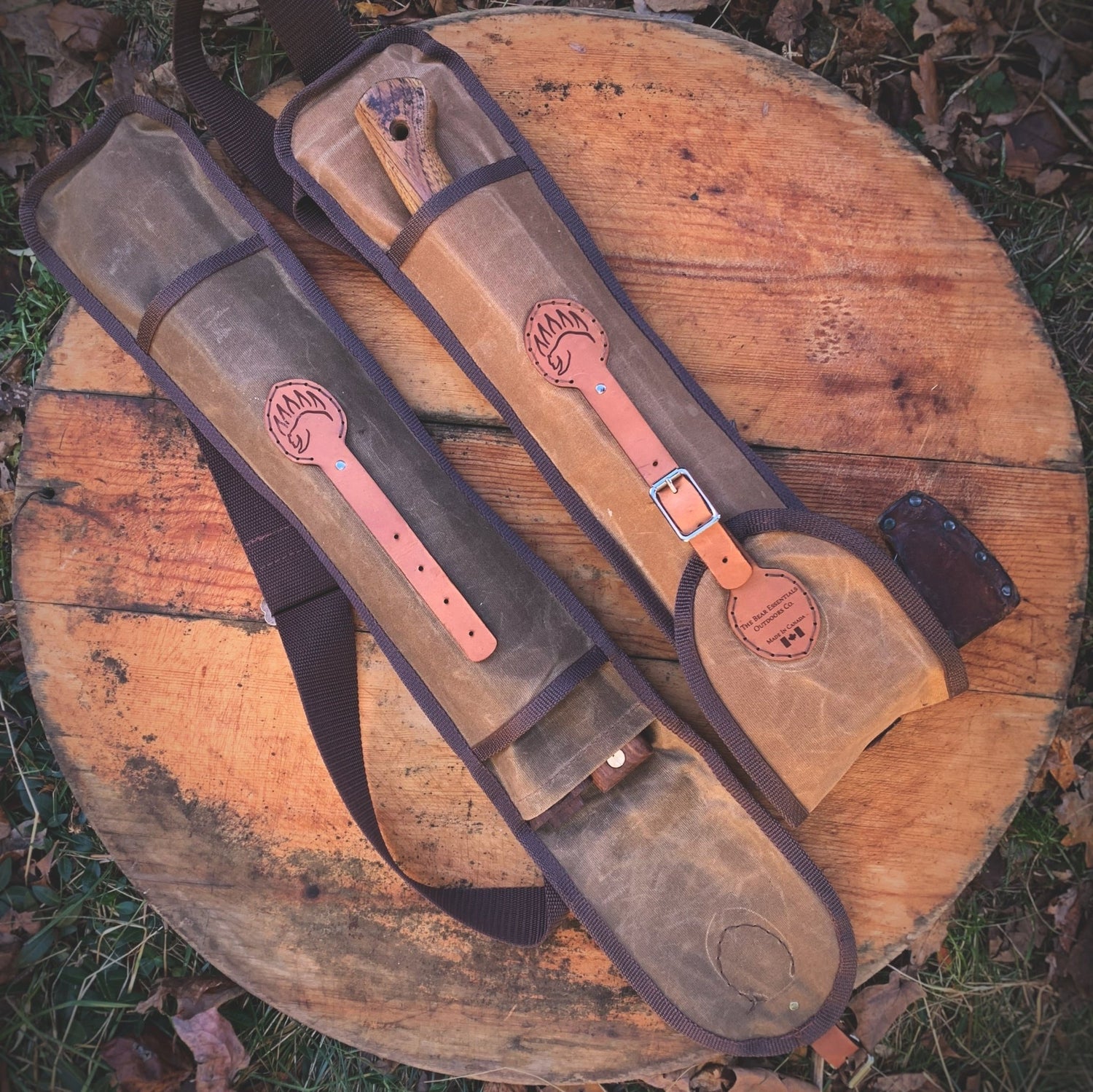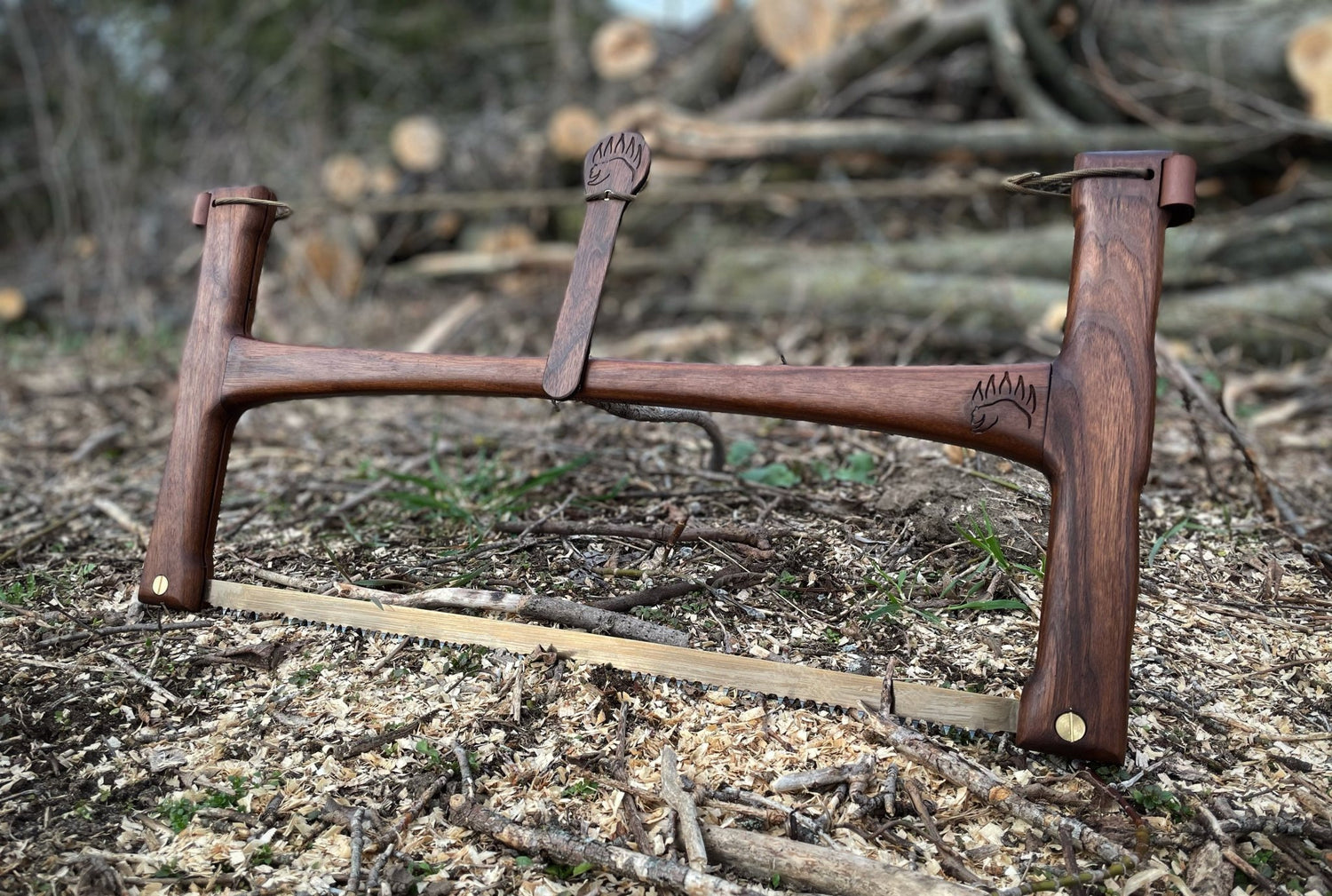Through years of experience backcountry camping or car camping, different outdoor enthusiasts have their favorite arsenal of tried-and-true camping hacks that they come back to time and again every time they are out for an adventure.
Likewise, this blog article does not claim to be an all-extensive list of bushcraft tips.
Instead, it is a collection of camping hacks that I have found to be most reliable and useful during moments of need - far away from “civilization” and materials available in the city that would have “made life easier”.
But this is the beauty of bushcraft and survival using only the tools of nature, isn’t it?
When you’re in the middle of nowhere and you can’t find important items in your bag, using your creativity and resourcefulness with whatever you can find to solve problems is the essence of the adventure itself.
Depending on which locality or region you are camping in, the diversity of natural resources available to you adds to the challenge of using bushcraft techniques to survive.
And when you do survive, you come back and do it all over again.
You are hooked.
Read on to learn thirteen bushcraft and camping hacks that have helped me not only survive, but even enjoy and be confident with every outdoor nature trip.
Camping Hack #1: Find Your First-Aid Kit Fast With a Bright Red Toggle
An emergency situation while out camping is enough to cause panic; you don’t want to worsen panic mode by scrambling to open every zipper on your camping backpack just to find the medical kit.
This is, perhaps, the most important, life-saving camping hack no one should ever miss:
Replace the zipper pull on the bag compartment that contains your first aid kit with a bright red, reflective paracord.
The color red is highly contrasting, and at night, a reflective cord would be easier to find.
With this toggle, it is also easier to instruct your companion when you need them to find the kit.

How to do it: Tie a short length (8–10 cm) of red reflective paracord with a double overhand.
Label the pocket “med” if you share gear and make “red = med” a team rule in your group briefing.
Camping Hack #2: Save Your Headlamp Camp Light Battery
When backcountry camping, you may have experienced arriving at camp with your headlamp accidentally turned on inside your bag and its battery dying.
Those were new or fully charged batteries when you left, but they were drained along the way without being used. Now you have no camp light.
Thankfully, there is a simple camping hack to avoid this unfortunate event.
How to do it: Before trips, insert the middle battery in your headlamp backwards. Many headlights don't allow the circuit to be completed if the battery is put backwards as the two terminals will not touch.
Alternative: Place a piece of plastic between the battery terminals so they don’t touch. This technique breaks the circuit so an accidental bump can’t turn it on.
With rechargeables, crack the tailcap a quarter turn for a mechanical lockout.
You can also store a small elastic around the lamp body to prevent button presses. Keep a spare cell inside a coin pouch.
Camping Hack #3: Build a Double-Rock Anchor For Hard-Packed Ground
Driving tent stakes into alpine camps, river bars, frozen ground, desert caliche, or any site with hard-packed ground (hardpack/hardpan) will not work.
In cases like these, don’t waste your time and end up bending your tent stake. Build a double-rock anchor instead.

How to do it:
Wrap your guyline around a medium rock (primary anchor). Then place a larger rock in front of the pull as a chock.
Tie a taut line hitch on the free end to tension; re-check after gusts.
Camping Hack #4: Create Some Tarp Headroom For Your Camping Tent With a Sliding Peak
A flat camping tarp can make anyone claustrophobic, especially in rain. But a high, vented pitch reduces condensation.
How to do it:
Tie each corner’s guyline with a taut line hitch knot (two wraps toward the load, one away).
Then slide a trekking pole or sturdy stick under one corner and snug the hitch to form a small peak.

Finally, you can eat, cook, and organize without brushing your hood on wet fabric.
Pull the stick and cinch flat when the wind kicks up.
Camping Hack #5: Hang a Drip Line For Passive Rainwater Harvesting
Every shelter needs a planned low point.
Hang a short cord from the tarp edge or ridgeline seam; water will follow it and drip where you decide.
Park a pot under that drip: that’s passive rainwater harvesting for dishwater or boiling (purify before drinking).
You’ll keep the ground drier under the sleeping area and the camp feels instantly more civilized.
Safety note: Treat rainwater as raw. Boil, filter, or otherwise purify before using it for food or drinking.
Camping Hack #6: Solve Cord Chaos With a Taut Line Stowaway
When breaking camp, don’t strip your lines.
Leave guylines attached to the camping tarp, coil each into a neat hank, then tuck the bight through the loop of your taut line hitch to lock it closed.
On the next setup, you’ll just peel each hank free and tension.
It’s faster, you lose less cord, and you stop creating mystery tangles at the bottom of the stuff sack.
Camping Hack #7: Two Fast Fixes for a Ripped Tarp Corner
Grommets fail; knots don’t. Here are two field repairs to consider:
1. Fold-Back Loop
Fold the tarp edge back on itself to double the fabric, run your guyline through the fold, and cinch.
The doubled hem distributes stress and often outlasts the original grommet.

2. The Rock Method + Clove Hitch
Gather the corner around a smooth stone (a “button”), then tie a clove hitch snug behind the stone.
The clove hitch knot pinches fabric evenly and gives you a tie-out without piercing anything.
Both fixes get your waterproof tarp back in the fight within minutes.
Camping Hack #8: Use Resin and Birch Bark For Patching Your Tarp Tent
For punctures or small tears, melt pine or fir resin and smear it onto birch bark; press that over the hole like a natural patch.
Birch is waterproof by design; resin is sticky and hardens into a decent seal.
Use a twig as your applicator so you’re not gumming up your blade.
It’s not pretty, but in wind and rain it holds shockingly well and buys you the night.
Camping Hack #9: Sharpen a Knife Even Without a Stone
A dull knife is dangerous.
If you forgot a stone, a leather strop (the inside of a belt) is your fix.
Lay it flat, pull the blade spine-first (edge trailing) at a consistent angle. Ten slow passes per side realign the edge.
If you carry a pocket compound, load the leather for an extra bite.
No belt? A leather boot top works in a pinch.
This same “strop it instead of grind it” idea revives a wood axe too—carefully—after you wipe grit off.

Field sharpener wallets like these also come in handy for sharpening your axes, knives or blades on-the-go.
Think of it as micro-maintenance between real sharpenings.
Camping Hack #10: Efficiently Split Firewood By Bundling
Instead of chasing rolling rounds, lash firewood into a tight bundle with a strap or cord, then split the entire bundle vertically.
Everything stays upright and controlled, and you end with a pre-bundled stack for hauling.
Whether you swing a wood splitting axe or baton with a blade, this keeps pieces from tipping into your shins.
Bonus: If you bring a compact firewood splitter (wedge or stand), this trick feeds it steadily without juggling pieces.
Camping Hack #11: No Axe? Split Firewood With a Saw
If the axe is missing or broken, you can still be splitting wood with a folding saw.
Cut a V-notch from opposite sides so the cuts pass just past center.
Set the log with the cuts facing down and drop it on a rock or strike the top—crack.
This “step-cut” focuses force where fibers are already severed.
Choose sound, straight-grained pieces; avoid knotty, punky stock.
Camping Hack #12: Build a Fire Starter with Fatwood
Resin-rich pine known as fatwood is nature’s cheat code.
Thin shavings make a waterproof fire starter; thicker sticks burn like torches.
Bundle a few with a constrictor knot and you’ve built a wind-resistant fatwood fire starter.
Lakeside drizzle? You’ll still be cooking.
Stumps and old knot clusters are prime fatwood sources—look for amber sheen and a strong piney smell.
DIY twist: Dip cotton pads in wax and sandwich a pinch of fatwood dust inside for a compact diy fire starter that lights with a tiny spark.
Camping Hack #13: Clean Pots Without a Sponge
Forgot the scrubber? Use what the forest gives you:
Sand or gritty soil for steel and robust cookware.
Moss or grass for non-stick surfaces you don’t want to scratch.
A handful of sand with a splash of water scours greasy film better than you’d think.
Rinse well downstream of camp and 200 feet from water sources.
It’s fast, it’s free, and it means you’re never stuck eating out of a sticky pot again.
Bonus: Shelter, Anchors, and Knots That Save the Day
Other camping hacks lists often gloss over anchors and knot mechanics.
Don’t.
The right anchor is the difference between sleeping and wrestling a flapping tarp tent at 2 a.m.
Here’s my short list:
Deadman Anchor: When Ground Won’t Hold
Sand, snow, and gravel don’t love tent stakes.
Bury a stick, rock, or sack filled with sand as a deadman anchor, with your guyline tied to the buried object (or to a stick toggled in the line).
Pack the trench well and orient the line at a shallow angle.
It’s wicked strong and keeps your outdoor tent or camping tarp planted.
Why it beats long stakes: You’re anchoring to mass and friction, not a thin blade of aluminum.
Taut Line Hitch: Adjustability Without Hardware

Learn more about the Taut Line Hitch from our knot tying tutorials blog.
If you remember one knot from this knot tying guide, make it the taut line hitch.
Two wraps toward the load, one away, dress neat. It slides when unweighted, locks when you lean into it.
Whether it’s a ridgeline over your tent for camping or a side pull on your waterproof tarp, you’ll micro-tune sag in seconds. (On a super slick cord, use a prusik or switch to webbing.)
Clove Hitch: Fast Tie-Off With a Quick-Release Option

Learn more about the Clove Hitch from our knot tying tutorials blog.
The clove hitch bites fast around a pole or rock “button.”
For tarp corners (and the rock-button repair in camping hack #7), it’s perfect.
Finish it slipped if you want a one-pull release in the morning.
Remember: Hitches love friction. Dress them clean, pull the slack out, then load.
Lighting, Safety, and Camp Layout—Small Tweaks, Big Comfort
Light for Work, Light for Camp
Headlamps do chores; lanterns create atmosphere.
A tiny diffuser cap or an inverted water bottle over your lamp makes a soft tent light.
For food prep, keep a compact task light in your cook kit—a bright, narrow beam you can clip under a ridgeline.
The battery flip (camping hack #2) ensures your camp light is ready after the hike in.
Kitchen Downwind, Sleep Upwind
Smoke and food smells belong away from your sleeping area—especially on national forest camping trips in bear country.
Pitch the kitchen where wind carries odors away from the camping tent.
Keep waste sealed and dangle a small “trash flag” (zip bag) under the tarp edge so it’s not forgotten.
Drying Line That Survives Weather
String a low, taut line under your tarp edge for damp socks and gloves.
Use tiny prusiks or mini clips so the line never sags into your face.
On wet trips, this line is almost as important as the shelter itself.
Fire That Works When You’re Tired
Start With Structure, Not Ego
The best fire starter is good structure: pencil leads, pencils, markers (thin → thick).
Build a small top-down stack so heat cascades through the bundle.
Add your fatwood or diy fire starter only after you’ve made a shape that wants to burn.
Harvest Fuel Early, Split Early
Just arrived? Process firewood right away.
Wet or not, split larger pieces to expose dry heartwood (camping hack #11) and stage it under the tarp.
Nothing crushes morale like trying to split wood in the dark.
Knife and Axe: Care That Prevents Accidents
The Strop is Your Friend
Five calm minutes on a leather strop each evening saves you from forcing cuts the next day.
A stropped blade bites cleanly and is less likely to skate.
If you baton wood, wipe grit first; grit + strop = sandpaper on your edge.
Axe Sanity
If you pack a wood splitting axe or camp wood axe, treat it like a seatbelt—boring until you need it.
Work at a stump (not bare ground), keep feet apart, and never swing tired.
A quick strop (careful!) realigns a rolled edge after a missed strike.
If you’re wiped out, revert to the saw + step-cut method.
Cleanup That Doesn’t Trash the Place
Greywater Without the Funk
Use a little dish soap if allowed, but your best tools are heat and abrasion.
With sand + hot water, residue lifts fast.
Broadcast greywater broadly away from camp and water sources.
Pack Tiny, Pack Smart
A roll of contractor bag becomes a seat, a gear shelter, and an emergency bivy liner.
A handful of zip ties secures broken poles and rebuilds a pack strap long enough to get you home.
Car Camping vs Backcountry: Same Principles, Different Pace
Car camping gives you comfort levers: bigger outdoor tent, thicker sleep pad, extra lanterns, a firewood splitter you’d never carry.
But the core camping tips don’t change—plan a drip line, manage wind, secure anchors, stage firewood dry, keep blades sharp, and protect the trees.
Backcountry camping pares the kit down and makes skills matter more.
Anchors replace hardware, patches replace duct tape, and your camping hacks become the difference between a damp, frustrating night and the kind of camp you brag about later.
Quick Reference: Knots & Anchors You’ll Actually Use
- Taut line hitch knot – Adjustable tension for guylines and ridgelines.
- Clove hitch knot – Fast tie-off to posts, poles, or rock buttons; finish slipped for quick release.
- Deadman anchor – Buried mass anchor for sand/snow/gravel when tent stakes fail.
- Double-rock stake – Rock-on-rock substitute when you can’t drive stakes.
- Drip line – A short cord that controls run-off for rainwater harvesting (treat before drinking).
-
Bundle-splitting – Lash and split firewood in place; safer, faster, tidier.
Final Thoughts On Camping Hacks: Small Moves, Big Comfort
Great camps look effortless because the little things were handled early: a waterproof tarp pitched with intention, lines that self-adjust, anchors that don’t budge, fuel split and staged, blades stropped, light ready, first-aid findable.
That’s the heart of bushcraft—knowing how to do more with less, and how to fix the trip when small problems stack up.
Try a few of these camping hacks on your next overnighter.
Tie a taut line hitch three times at home, practice the clove hitch rock button in your backyard, flip your headlamp battery now, and toss a square of birch bark into your repair kit.
The point isn’t to show off clever tricks; it’s to buy yourself warm food, dry sleep, and the kind of morning where the first cup of coffee tastes like victory.




